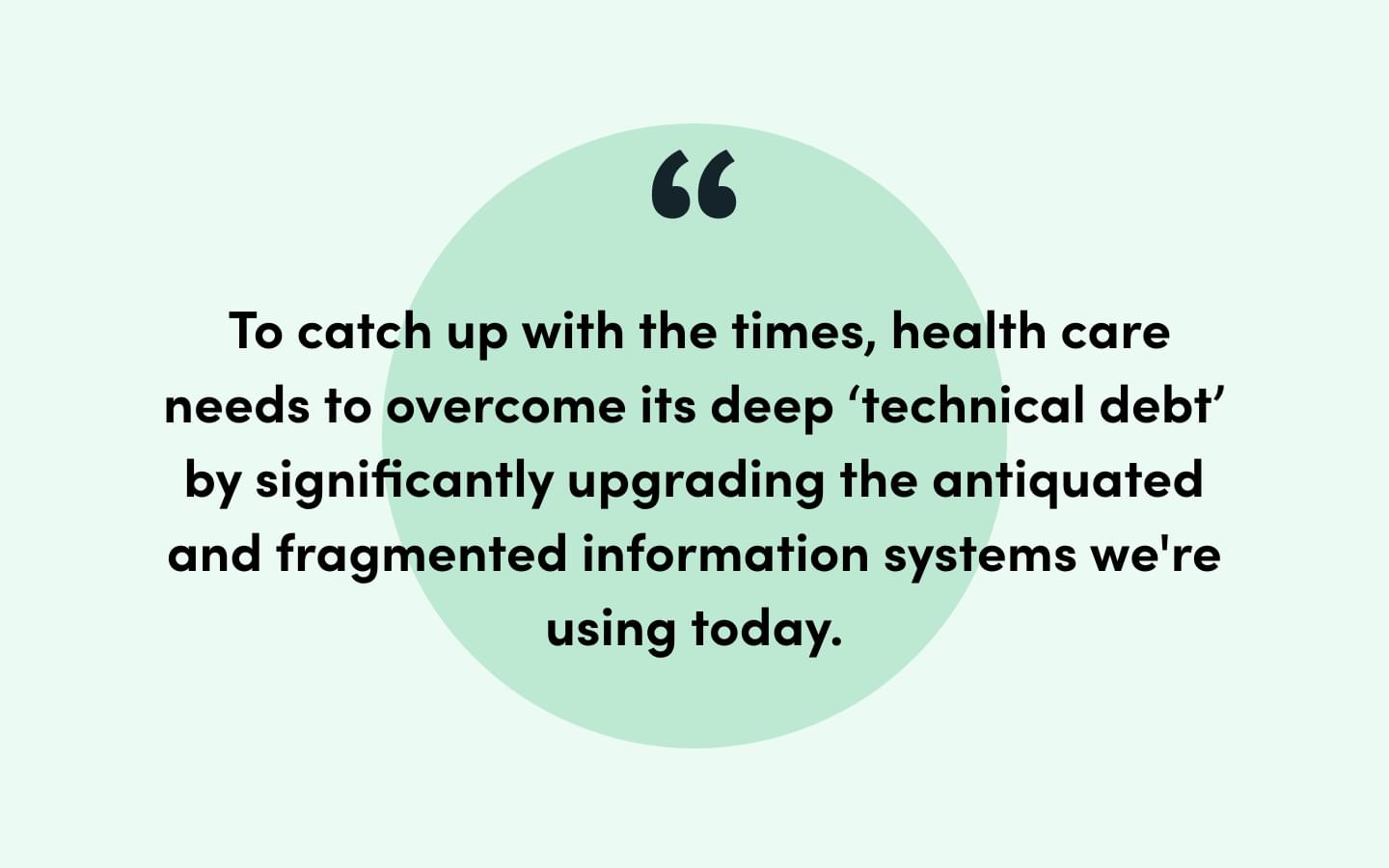Due to COVID-19, a changing economy, and business pressures, healthcare organizations have quickly had to adapt to numerous changes over the past several years. And one of the hardest hit areas was the technology they quickly had to implement in order to go—and stay—digital. Many organizations were forced to piece together digital transformation plans, resulting in hastily implemented technology fixes.
Only, these fixes often weren’t the magic system they were promised, forcing healthcare organizations to add even more solutions to their already full tech stacks to try and reach the ideal of digital maturity.
However, the more software and services healthcare organizations implemented to fix ones that didn’t deliver, the farther they went into debt—technical debt.

What is Tech Debt?
Technical debt is the result of quickly implementing flawed technology in an attempt to fix an immediate problem or need. It’s a bandaid on a gushing wound. It might help for a little bit, but it’s not a steady, reliable solution that will help healthcare organizations truly improve customer experience and patient outcomes.
And it’s a widespread issue in the healthcare industry as a whole. In fact, according to research firm McKinsey, 60% of CIOs reported increased spending on technical debt in 2020 alone. For many, that only grew as the pandemic spread.
Worse, as companies move to address the issue, they find themselves unable to launch new innovations because money has to be earmarked to pay for those past purchases. This means organizations have to go further into debt to get systems that work. At least, that used to be the case. But there are ways to overcome tech debt in healthcare.
Examine Your Tech Stack
According to the Catholic Health Association of the United States, “the challenge is that the technology infrastructure in health care is still 15 to 20 years behind other sectors. To catch up with the times, health care needs to overcome its deep ‘technical debt’ by significantly upgrading the antiquated and fragmented information systems we're using today.”

Therefore, the easiest way to get ahead of tech debt is to take stock of what systems you’re using now. Here are some things to consider when auditing your systems:
- Which ones aren’t actually serving your needs?
- Which ones are contributing to siloed data?
- Which ones aren’t communicating with each other?
Many organizations are too anxious to preform a complete tech stack audit because they’re afraid of what they’ll discover. But that only results in continued holdups and more pain points for patients and employees—not to mention more flawed technology added in to try and fix the problem instead of finding a solution to the overall cause.
Instead, survey employees to see which systems and processes are slowing them down. Doing a full technology audit is the only way to ensure you get an overarching view of where systems are overlapping, lacking, and causing holdups. It also allows you to combine and consolidate technology by using an all-in-one workflow solution. This can save you money in the long run by replacing multiple point solutions with a single platform. And the sooner you stop paying for solutions that don’t work, the sooner you can start putting that money toward ones that do.
Implement All-In-One Solutions
After you discover where your pain points are and which systems are holding you back, search for single solutions to solve your tech stack problems. By consolidating, you’ll save money and headaches for you, your employees, and your patients by having fewer systems to master, less siloed data, and faster communications.
Not to mention that these platforms may often offer even more capabilities than you were getting before. For example, with workflow automation, you can prefill forms and documents with data from existing systems, like Salesforce. That way, you can make Salesforce or another system your single source of truth.
And many of these solutions are low or no-code, which means that anyone in your organization can create the forms and documents you need to keep business running smoothly.
Learn More: Low-Code Versus No-Code: What’s the Difference?
Get Out of the Red for Good
Overall, finding a solution that can help replace some of your “band-aided together” processes first requires you to painfully rip off that bandaid. Only then can you set about addressing the underlying issues. But once you do, you’ll have the freedom to find the tools that work for your tech stack and don’t cost you a fortune.
To discover why eight of the 10 largest nonprofit hospital systems use Formstack’s healthcare automation tools, see how Formstack’s automated workflow solutions combine into one, easy-to-use platform.











